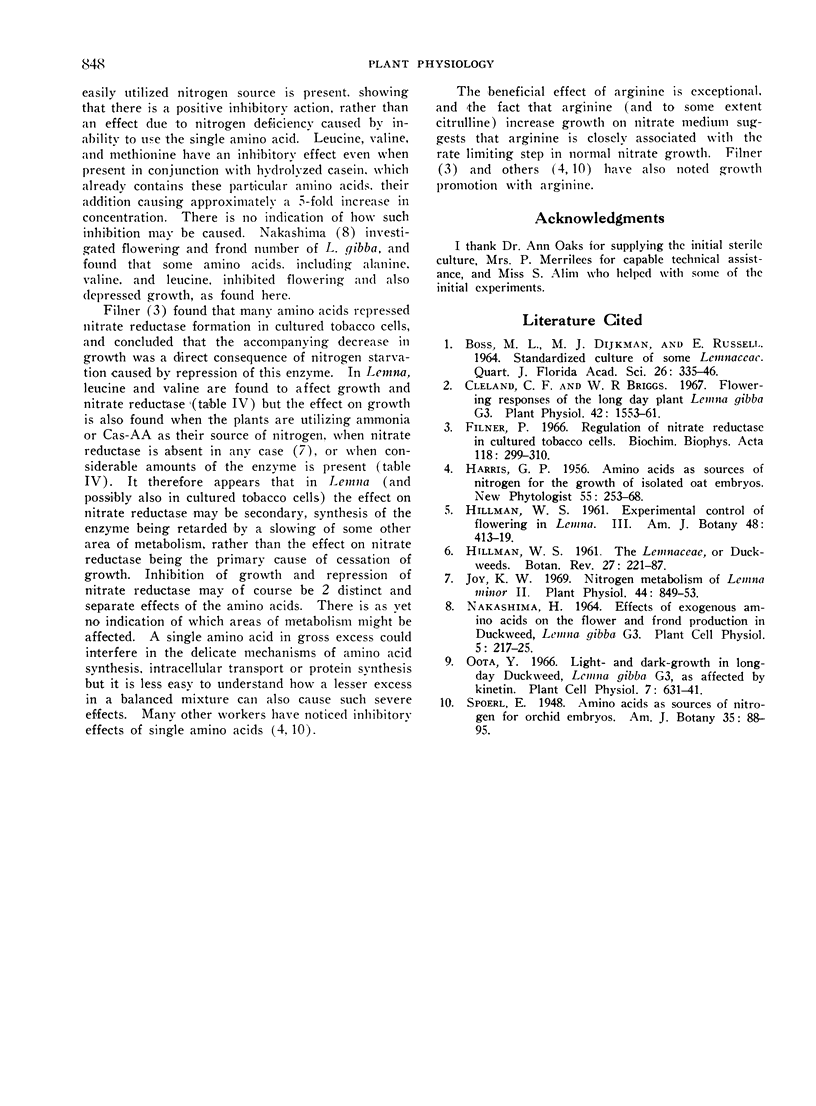Abstract
Lemna minor grown in sterile culture on a minerals-sucrose medium can utilize as nitrogen source, in order of increasing growth rate: ammonia, nitrate, a mixture of glutamic and aspartic acids plus arginine, or a balanced mixture of amino acids (hydrolyzed casein). Maximum growth is found with nitrate plus hydrolyzed casein.
Many synthetic mixtures of amino acids are unable to support growth. Many single amino acids are inhibitory, and when added (at 2 mm or less) to cultures, growing in the presence of nitrate, cause a decrease in growth rate or even death of the plants (e.g. with alanine, valine, methionine or leucine). Some of these inhibitory effects are also found when the amino acid is added to cultures growing on ammonia or hydrolyzed casein. Arginine was the only amino acid of those tested which gave a marked stimulation of growth when added to cultures growing with inorganic nitrogen.
The rapid rate of growth, sterile nature of tissue, decreased biological variation of samples containing many plants and ability to utilize different culture media make this an attractive organism for studies on higher plant metabolism.
Full text
PDF



Selected References
These references are in PubMed. This may not be the complete list of references from this article.
- Cleland C. F., Briggs W. R. Flowering Responses of the Long-day Plant Lemna gibba G3. Plant Physiol. 1967 Nov;42(11):1553–1561. doi: 10.1104/pp.42.11.1553. [DOI] [PMC free article] [PubMed] [Google Scholar]
- Filner P. Regulation of nitrate reductase in cultured tobacco cells. Biochim Biophys Acta. 1966 May 5;118(2):299–310. doi: 10.1016/s0926-6593(66)80038-3. [DOI] [PubMed] [Google Scholar]
- Joy K. W. Nitrogen metabolis of Lemna minor. II. Enzymes of nitrate assimilation and some aspects of their regulation. Plant Physiol. 1969 Jun;44(6):849–853. doi: 10.1104/pp.44.6.849. [DOI] [PMC free article] [PubMed] [Google Scholar]


